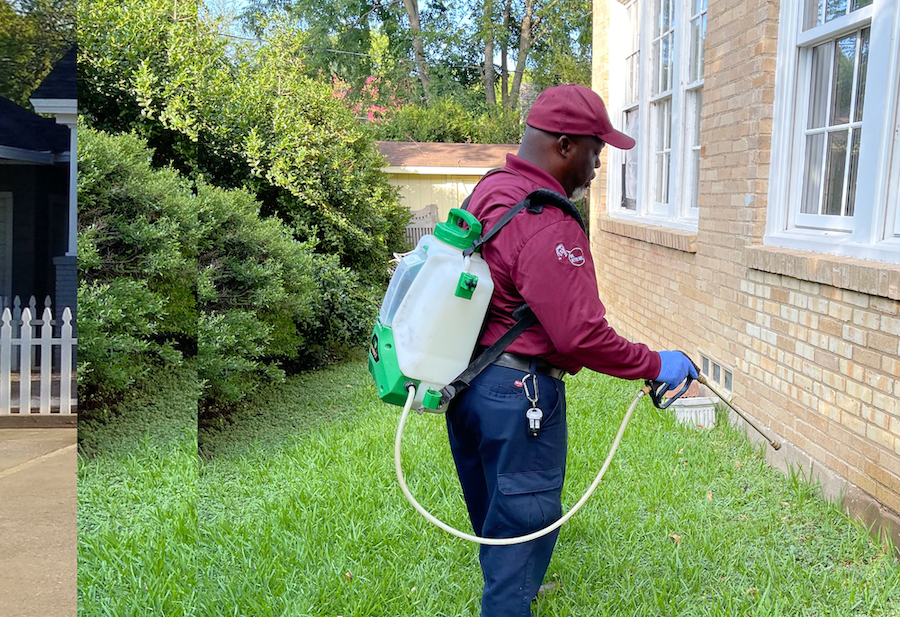In the kitchen, safety and cleanliness are paramount, especially when it comes to dealing with contaminated or infested food. Whether it’s moldy bread, expired dairy, or pantry items harboring pests, knowing how to safely dispose of such items is crucial in preventing health risks and further infestations. You can seek the help of exterminators at Pointe Pest Control Company to learn effective waste disposal methods.
Here’s your comprehensive guide to ensuring your kitchen remains a safe and hygienic environment.
The Importance of Proper Disposal
Improper disposal of contaminated food can lead to a range of issues. From attracting pests like rodents and insects to posing serious health risks from bacteria and mold, it’s crucial to handle and dispose of these items correctly. In fact, contaminated food, if left unchecked, can also lead to cross-contamination, impacting other fresh food items and surfaces in your kitchen.
Identifying Contaminated Food
The first step in handling contaminated food is identifying it. Look for common signs such as:
- Mold and Discoloration: Visible mold growth or unusual discoloration in food items is a clear indicator of contamination.
- Foul Odors: A sour or off-putting smell often signals spoilage or bacterial growth.
- Texture Changes: Slimy or excessively dry textures in perishable goods can indicate spoilage.
- Pest Evidence: The presence of insects, larvae, or rodent droppings in or near food items is a red flag.
Safe Disposal Methods
Once you’ve identified contaminated food, follow these steps for safe disposal:
- Contain and Seal: Place contaminated food in a sturdy, sealable plastic bag to prevent leaks and odors. Double-bagging is recommended for highly odorous or hazardous items.
- Dispose Promptly: Take the bagged items directly to an outdoor trash bin. Avoid leaving contaminated food in indoor trash cans, as this can attract pests and spread contamination.
- Clean Containers: If contamination occurred in a reusable container, clean it thoroughly with hot, soapy water, followed by a disinfectant rinse. For severe contamination, consider discarding the container.
- Compost with Caution: Certain food waste can be composted, but avoid adding diseased or pest-infested items to your compost pile, as this can spread pathogens.
- Community Disposal Programs: Check if your local community has specific guidelines or programs for disposing of food waste, especially for large quantities.
Preventing Future Contamination
Prevention is key to maintaining a safe kitchen environment. Here are some tips to minimize the risk of future contamination:
- Regular Inspections: Routinely check your pantry and refrigerator for signs of spoilage or pests. Keeping an inventory can help manage food storage effectively.
- Proper Storage: Store perishable items in airtight containers to prolong freshness and prevent pest access. Use the first-in, first-out method to ensure older items are used before they expire.
- Maintain Cleanliness: Regularly clean kitchen surfaces, including counters, cabinets, and floors, to remove crumbs and spills that can attract pests. Don’t forget to clean behind appliances, where food debris can accumulate.
- Control Moisture: Pests such as cockroaches thrive in moist environments. Use dehumidifiers and fix leaks to maintain dry kitchen conditions.
- Sanitize Regularly: Use food-safe cleaning agents to sanitize cutting boards, utensils, and countertops after preparing meals, especially when handling raw meat or eggs.
The Role of Sanitation and Hygiene
Maintaining a hygienic kitchen goes beyond just regular cleaning. It encompasses a holistic approach that includes:
- Hand Hygiene: Always wash your hands with soap and water before and after handling food. This simple practice can significantly reduce the risk of cross-contamination.
- Pest Control Measures: Implement pest control measures, such as sealing entry points, using traps, and consulting professional services if necessary.
- Educational Awareness: Stay informed about food safety practices. Many resources and workshops are available to educate homeowners about proper food handling and storage techniques.
Conclusion
By following these best practices for handling contaminated food and maintaining proper sanitation, you can create a safer, healthier environment for your family. Remember, vigilance in the kitchen not only prevents pest infestations but also protects against foodborne illnesses, ensuring that your meals are not only delicious but safe as well.

